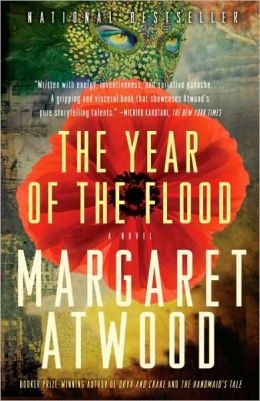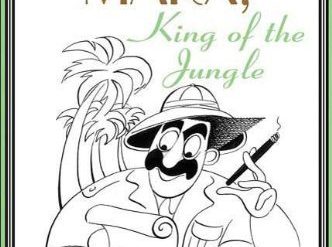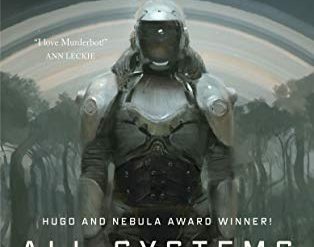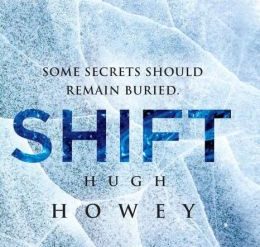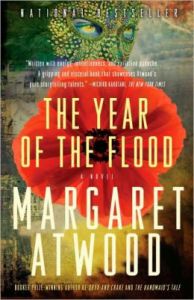
Corporations now reign supreme in this imaginative view of the future. Their executives are holed up in walled compounds, wallowing in consumerism and competing with gangland tactics of kidnapping and extortion, while the rest of humanity lives in “pleeblands,” vulnerable to the predations of new breeds of feral transgenic animals (wolvogs, pigoons, rakunks, liobams), vicious criminals, and the ruthless goons of the CorpsSeCorps police alike.
Estimated reading time: 3 minutes
The oceans have risen, drowning major cities. Fierce sunlight and suffocating heat require top-to-bottom bodysuits when exposed outside the walls of the crumbling pleebland buildings. Most work as we know it today is available only in the corporate enclaves. Increasing numbers of desperate people are flocking to God’s Gardeners, an eco-extremist cult that venerates all the lost animal species that predated the gene-spliced creations that now rule the forests.
Welcome to the world of Margaret Atwood. It is the year of the Flood — not Noah’s watery world of the Ark but the Waterless Flood long predicted by God’s Gardeners that will, it is foretold, wipe out humanity.
The Year of the Flood (MaddAddam Trilogy #2) by Margaret Atwood (2009) 448 pages ★★★★☆
Is this our future? We can hope not, but the picture Atwood paints is based on trends that are easy to see today. As a cautionary tale, The Year of the Flood is a sobering look at one scenario for the future of the human race.
This is the second book in the MaddAddam Trilogy. Confusingly, it’s not a sequel to Oryx and Crake, the first book, but ranges through the same period of time, with the perspective shifted from the corporate elite to the masses of pleebs outside the walls. Characters casually introduced in Oryx and Crake come to life in The Year of the Flood, while the principals in the first book take a back seat in the second.
Now, in the quarter-century leading up to the Flood, we focus on three unfortunate young women whose paths cross in God’s Gardeners: Brenda (Ren), Amanda, and Toby. Short chapters written from their individual points of view alternate throughout the book, gradually illuminating the connections to Oryx and Crake (which I reviewed here).
Margaret Atwood is one of Canada’s most celebrated writers. She has won both the Man Booker Prize and the Arthur C. Clarke Award for science fiction, among many others.
For related reading
Previously I reviewed the first book in this trilogy: Oryx and Crake (MaddAddam Trilogy #1)—Margaret Atwood’s brilliant dystopian fiction.
For more good reading, check out:
- These novels won both Hugo and Nebula Awards
- The ultimate guide to the all-time best science fiction novels
- The top 10 dystopian novels reviewed here
- Eight new science fiction authors worth reading now
You might also check out Top 10 great popular novels.
And you can always find my most popular reviews, and the most recent ones, on the Home Page.

